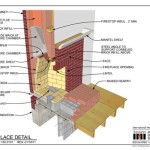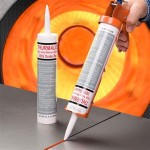Entertainment Center Fireplace Safety: A Comprehensive Guide
The integration of fireplaces into entertainment centers is a popular design trend, offering both aesthetic appeal and supplemental heating. However, this combination necessitates careful consideration of safety standards to prevent fire hazards and ensure the well-being of occupants. This article provides a detailed examination of essential safety precautions and best practices for entertainment centers featuring fireplaces.
Understanding Potential Fire Hazards
The primary concern with integrating fireplaces into entertainment centers is the potential for combustible materials to ignite due to proximity to the heat source. Entertainment centers often house electronic devices, books, decorative items, and furniture, many of which are flammable. The radiant heat, sparks, or even direct flame contact from a fireplace can quickly escalate into a fire if proper safeguards are not implemented.
Inadequate ventilation around the fireplace is another significant hazard. Restricted airflow can lead to overheating, potentially causing nearby materials to ignite or damaging the fireplace itself. Furthermore, incomplete combustion due to poor ventilation can result in the buildup of dangerous gases like carbon monoxide.
Finally, the improper installation of the fireplace or the entertainment center can create structural weaknesses and increase the risk of fire. Faulty electrical wiring, unstable foundations, or inadequate insulation can all contribute to hazardous conditions.
Essential Safety Precautions
To mitigate the risks associated with entertainment center fireplaces, several safety precautions must be diligently observed. These measures encompass material selection, spatial distancing, ventilation considerations, and regular maintenance.
Material Selection: The choice of materials for both the entertainment center and the surrounding area is crucial. Non-combustible or fire-resistant materials should be prioritized, especially for surfaces closest to the fireplace. Materials like stone, brick, concrete, and metal offer superior fire resistance compared to wood, fabric, and paper. If wood is used, it should be treated with a fire-retardant coating. Consider using engineered wood products specifically designed for fire resistance.
Spatial Distancing: Maintaining adequate distance between the fireplace and combustible materials is paramount. Building codes typically specify minimum clearance requirements for fireplaces, but these should be exceeded whenever possible within the constraints of the space. A buffer zone of non-combustible material surrounding the fireplace is highly recommended. Ensure that flammable items such as curtains, furniture, and paper products are kept well beyond the radiant heat zone.
Ventilation Considerations: Proper ventilation is essential for safe fireplace operation. The fireplace should be equipped with a functioning flue or chimney that effectively removes smoke and combustion gases. The surrounding area should also be adequately ventilated to prevent heat buildup. Ensure that air vents are not obstructed by furniture or other objects. For gas fireplaces, verify that the gas line is properly connected and leak-tested by a qualified professional.
Regular Maintenance: Routine inspection and maintenance are crucial for identifying and addressing potential safety issues. Chimneys should be cleaned annually to remove creosote buildup, a highly flammable substance that can lead to chimney fires. Fireplaces should be inspected for cracks, damage, or other signs of deterioration. Gas fireplaces should be regularly serviced by a qualified technician to ensure proper functioning and detect leaks. Smoke detectors and carbon monoxide detectors should be installed and tested regularly to provide early warnings of fire or gas leaks.
Specific Considerations for Different Fireplace Types
The specific safety considerations may vary depending on the type of fireplace installed within the entertainment center. Wood-burning fireplaces, gas fireplaces, and electric fireplaces each present unique risks and require tailored safety measures.
Wood-Burning Fireplaces: Wood-burning fireplaces pose the highest fire risk due to the presence of open flames and the potential for sparks and embers to escape. A fire screen or glass door should always be used to contain sparks and prevent them from igniting nearby materials. The use of seasoned hardwood is recommended, as it burns more cleanly and produces less creosote than softwoods. Never leave a wood-burning fireplace unattended.
Gas Fireplaces: Gas fireplaces offer greater control and convenience compared to wood-burning fireplaces, but they still require careful attention to safety. Regular inspections by a qualified technician are essential to ensure that the gas line is properly connected and free of leaks. Carbon monoxide detectors should be installed to detect any leaks of this odorless and deadly gas. Ensure that the fireplace is properly vented to the outside to remove combustion gases. Never store flammable materials near the gas fireplace.
Electric Fireplaces: Electric fireplaces are generally considered safer than wood-burning or gas fireplaces, as they do not produce an open flame or combustion gases. However, they still generate heat and can pose a fire risk if used improperly. Ensure that the electric fireplace is plugged into a properly grounded outlet and that the electrical cord is in good condition. Avoid overloading the circuit with other appliances. Keep flammable materials away from the electric fireplace, and never leave it unattended.
Building Codes and Regulations
Compliance with local building codes and regulations is essential for ensuring the safety of entertainment center fireplaces. These codes typically specify minimum clearance requirements, ventilation standards, and material restrictions. Consult with a qualified building inspector or contractor to ensure that the fireplace and entertainment center meet all applicable requirements.
It is also important to obtain the necessary permits before installing a fireplace or modifying an existing structure. Failure to comply with building codes can result in fines, legal liabilities, and increased fire risk.
Furthermore, homeowners insurance policies may have specific requirements regarding fireplace safety. Review the policy carefully to ensure that the fireplace is properly insured and that all necessary safety precautions are in place.
Emergency Preparedness
Despite the best efforts to prevent fires, it is crucial to be prepared for emergencies. Develop a fire safety plan that includes evacuation routes, meeting points, and emergency contact information. Ensure that all occupants are familiar with the plan and practice it regularly.
Install and maintain working smoke detectors and carbon monoxide detectors throughout the home, particularly near sleeping areas and the fireplace. Test the detectors regularly to ensure that they are functioning properly.
Keep a fire extinguisher readily accessible and know how to use it. Consider taking a fire safety course to learn basic fire suppression techniques.
In the event of a fire, evacuate the building immediately and call emergency services. Do not attempt to fight the fire yourself unless it is very small and you are confident in your ability to do so safely.
Professional Installation and Inspection
Proper installation of a fireplace within an entertainment center is critical for safety and functionality. Hiring a qualified professional with experience in fireplace installation is highly recommended. A professional can ensure that the fireplace is installed correctly, that all safety requirements are met, and that the ventilation system is functioning properly.
Regular inspections by a qualified fireplace technician are also essential for identifying and addressing potential safety issues. A technician can inspect the fireplace for cracks, damage, or other signs of deterioration, and can perform necessary maintenance to ensure that it is operating safely and efficiently.
When hiring a professional, verify their credentials, licenses, and insurance coverage. Ask for references and check online reviews to ensure that they have a good reputation for quality workmanship and customer service.
The Role of Smoke and Carbon Monoxide Detectors
Smoke and carbon monoxide detectors are indispensable safety devices for any home, but they are particularly crucial in homes with fireplaces. These detectors provide early warnings of fire or carbon monoxide leaks, allowing occupants to evacuate the building and call for help before the situation becomes life-threatening.
Smoke detectors should be installed on every level of the home, particularly near sleeping areas and the fireplace. Carbon monoxide detectors should be installed on every level of the home, particularly near sleeping areas and near any fuel-burning appliances, including fireplaces.
Test the detectors regularly, at least once a month, to ensure that they are functioning properly. Replace the batteries at least once a year, or more frequently if necessary. Consider installing detectors with long-life batteries to reduce the need for frequent battery replacements.
Replace smoke detectors every 10 years, and carbon monoxide detectors every 5-7 years, or as recommended by the manufacturer.
It is crucial to understand the difference between smoke detectors and carbon monoxide detectors. Smoke detectors detect the presence of smoke, while carbon monoxide detectors detect the presence of carbon monoxide, an odorless and deadly gas. Both types of detectors are essential for comprehensive fire and carbon monoxide safety.
By adhering to these safety guidelines, homeowners can enjoy the aesthetic and heating benefits of an entertainment center fireplace while minimizing the risk of fire and ensuring the safety of their families.

ᑕ❶ᑐ Myth Vs Reality Do Electric Fireplaces Ruin Tvs

How To Choose A Fireplace Tv Stand The Home Depot

Costway 58 Inches Fireplace Tv Stand For Tvs Up To 65 With 1400w Electric Black Com
Electric Faux Fireplace Tv Stand Heater Entertainment Center With Built In Book

60 Electric Fireplace Tv Stand W Door Sensor Remote Control For Up To 70 Tvs

Kohn Tv Stand For Tvs Up To 65 With Electric Fireplace Included Featuring Tempered Safety Glass Cabinets Com

Lifesmart 60 In Faux Stone Media Fireplace Heater W Remote Timer Adjustable Flame Temperature Settings Safety Switch Zcfp1032us The Home Depot

Belleze 58 Tv Stand With 23 Electric Fireplace Console For Up To 65 Inch Home Entertainment Center Storage Cabinet Adjustable Shelves Astorga Gray Wash Com

Tvstandtvcabinet Media Console Storage Cabinet Entertainment Center With Electronicfireplace And Remote Control Using The Latest Infrared Heating Technology Electronic Flame Beautiful Safe Brown Quick Available At Unique Piece Furniture

70 Inch Modern Fireplace Media Entertainment Center With Bookcase Costway








